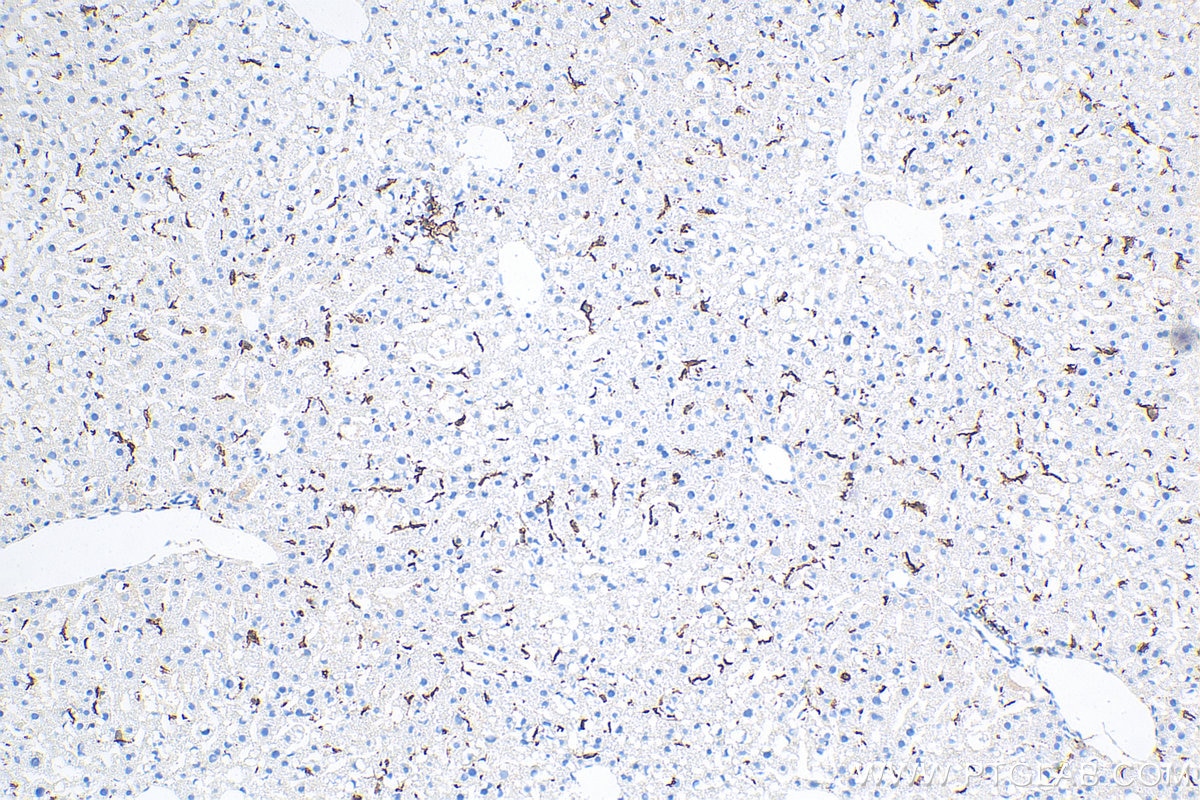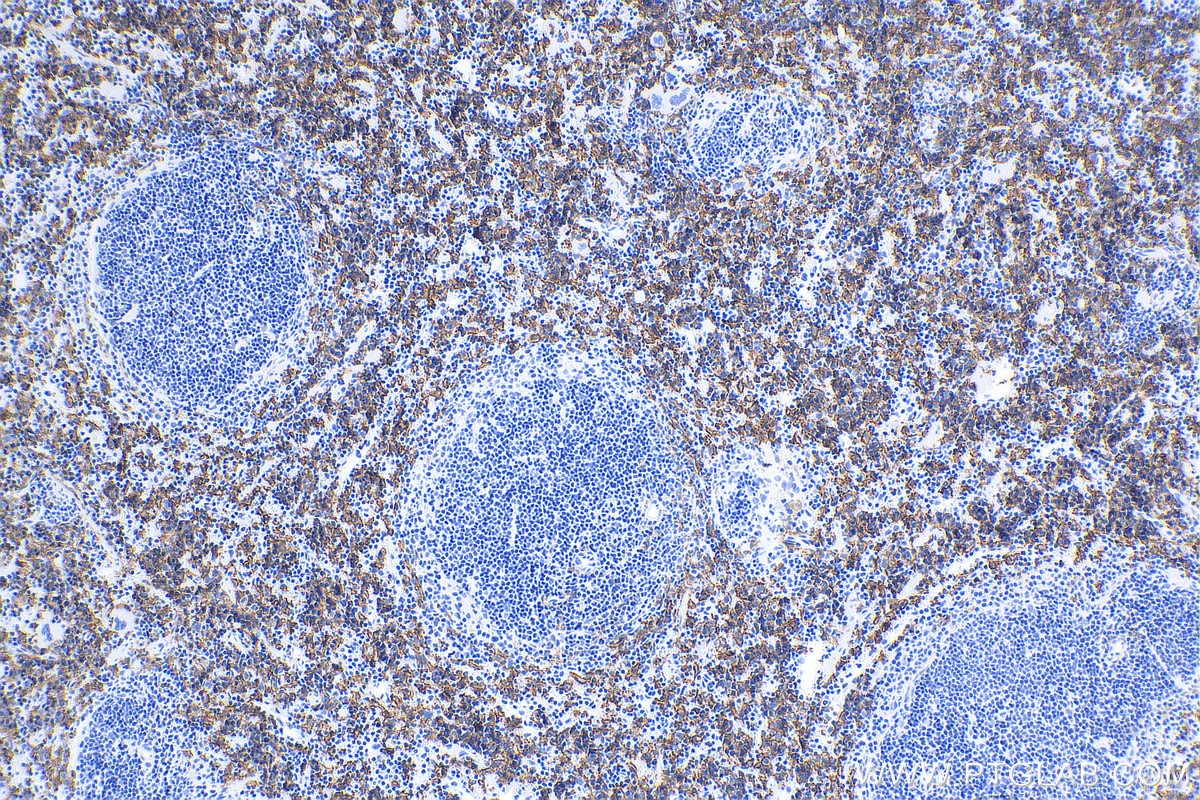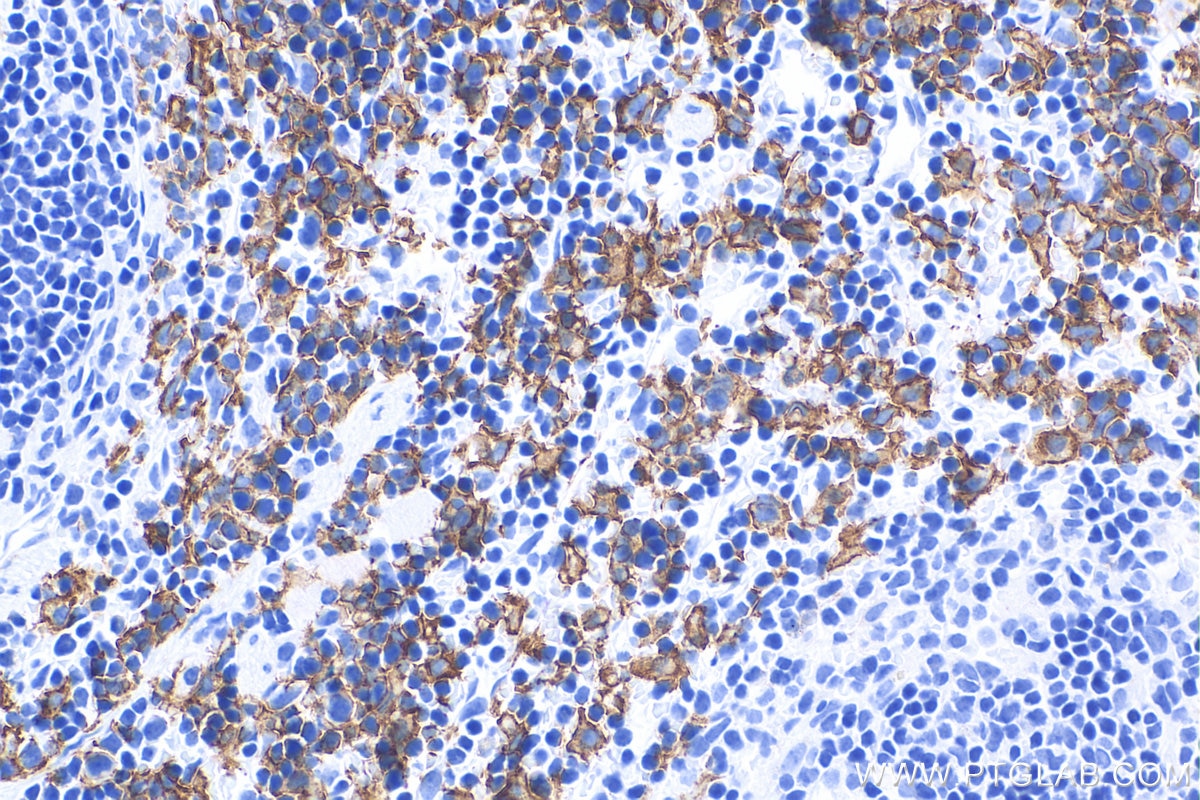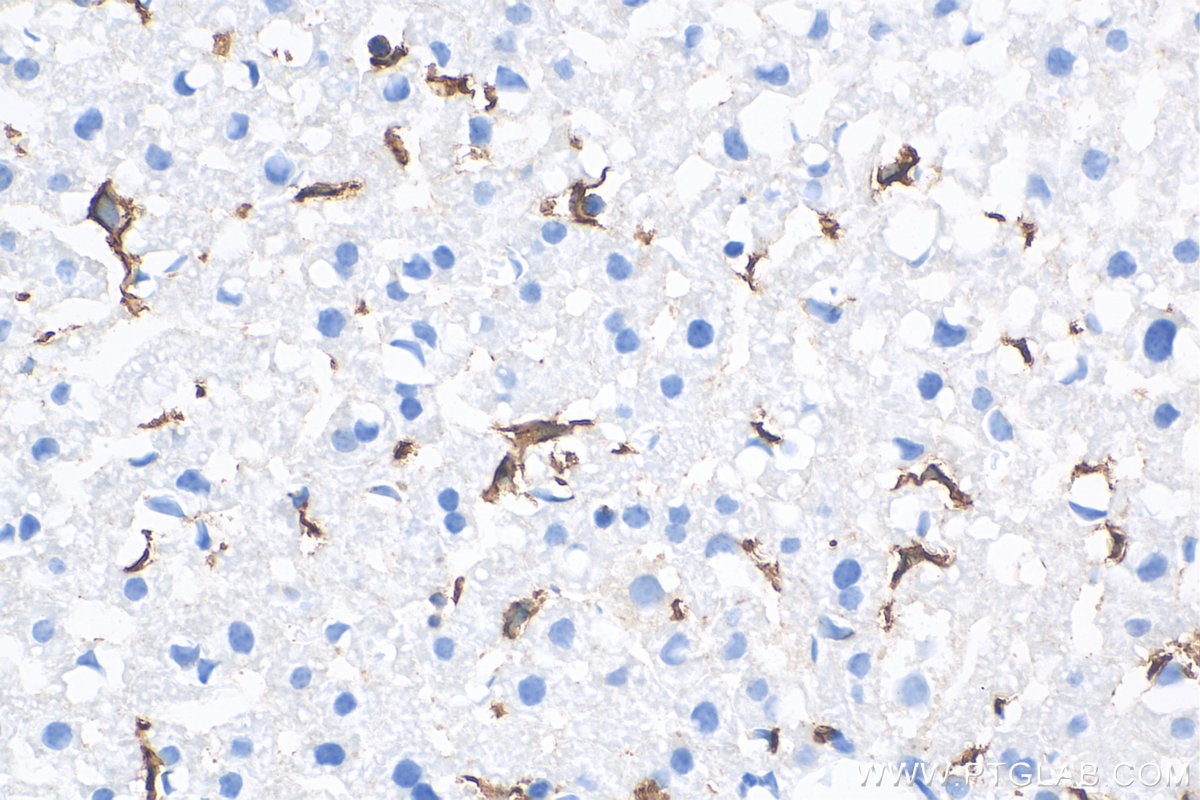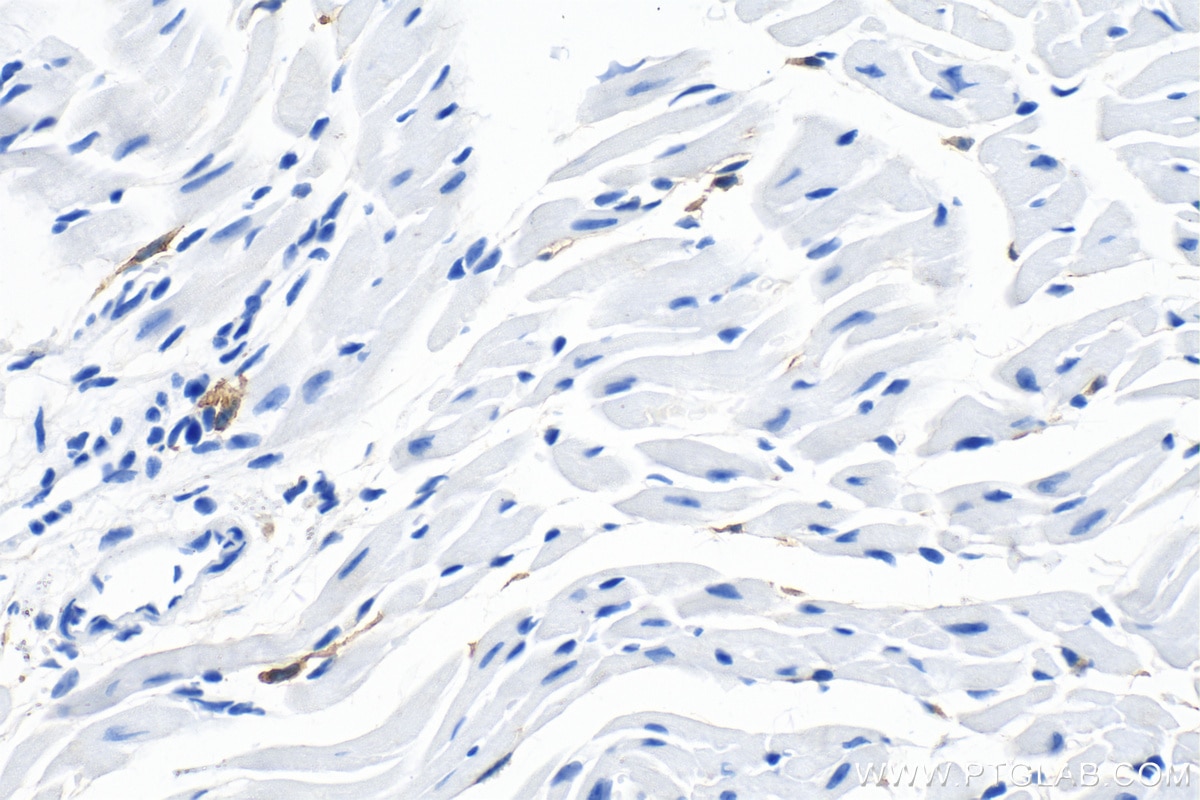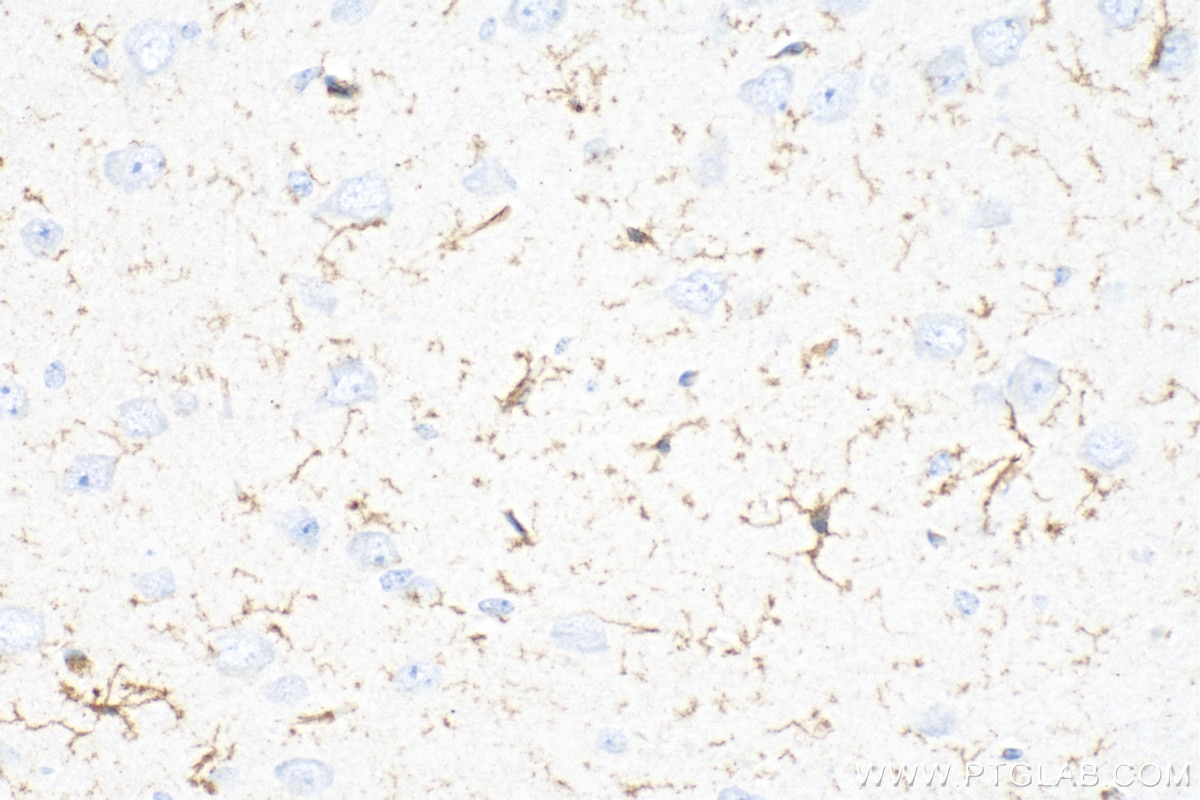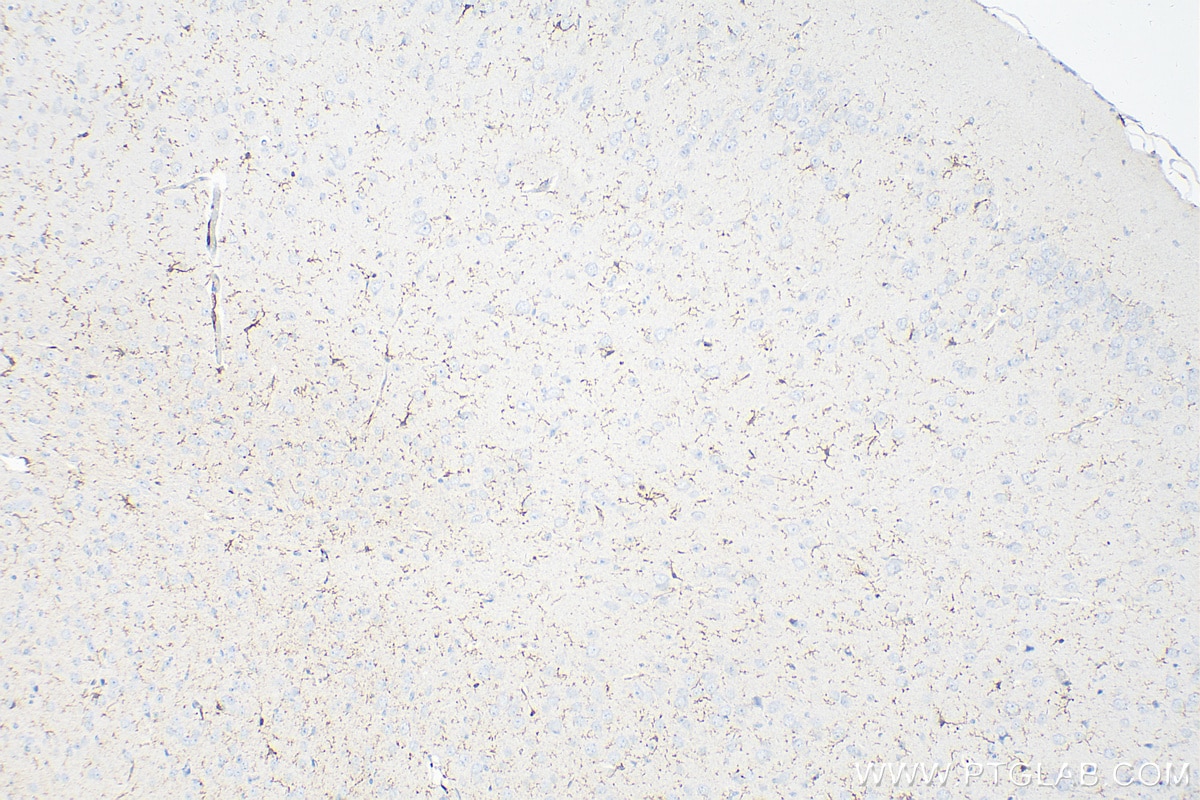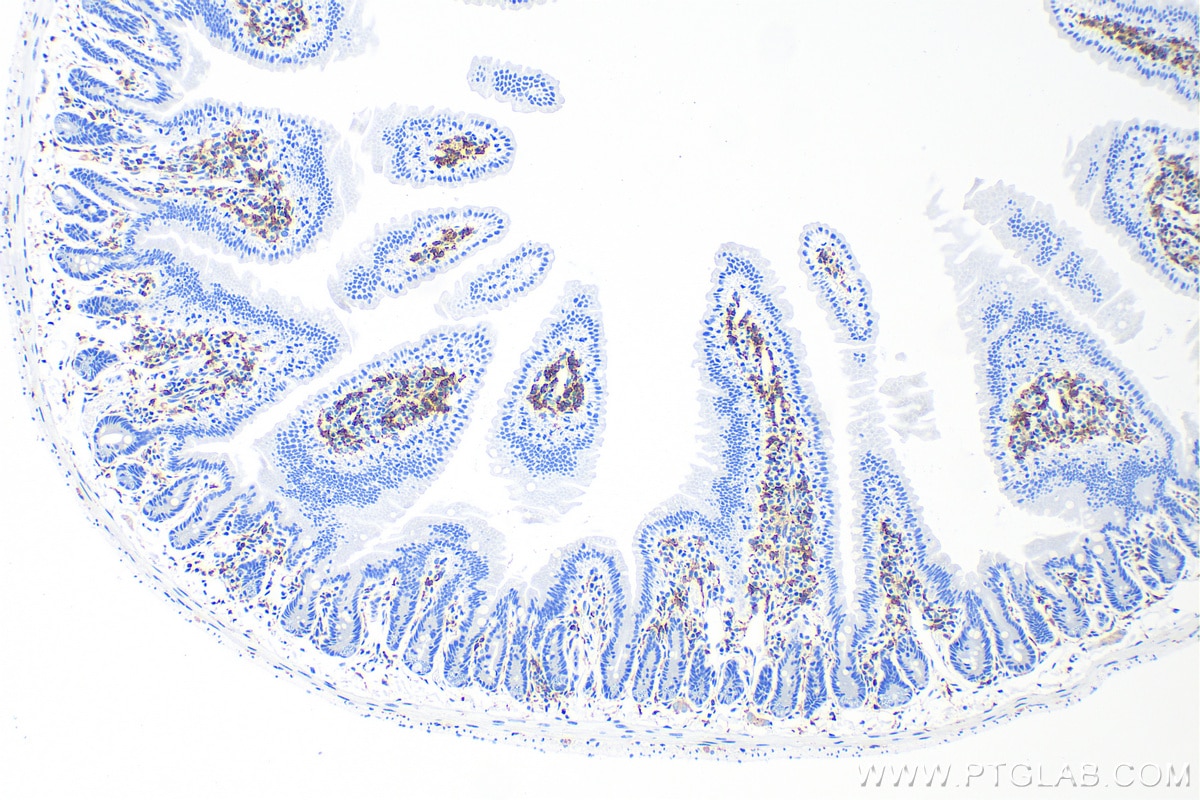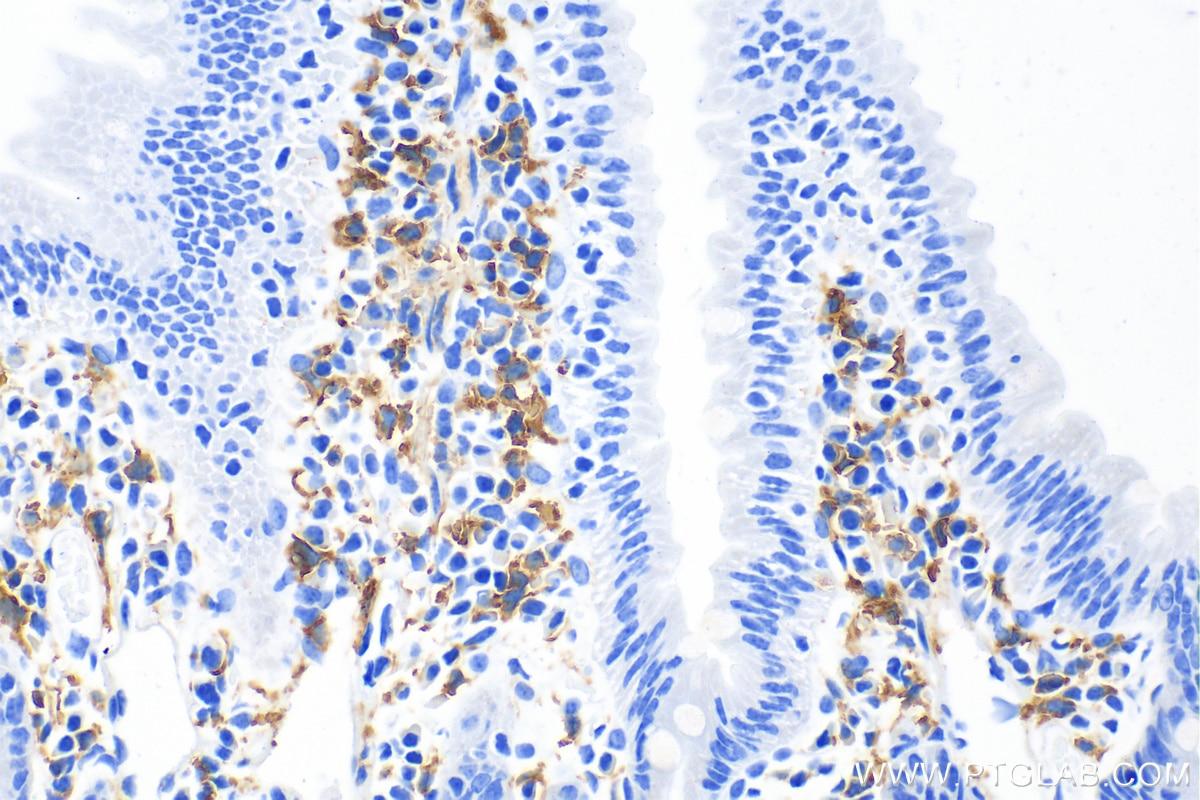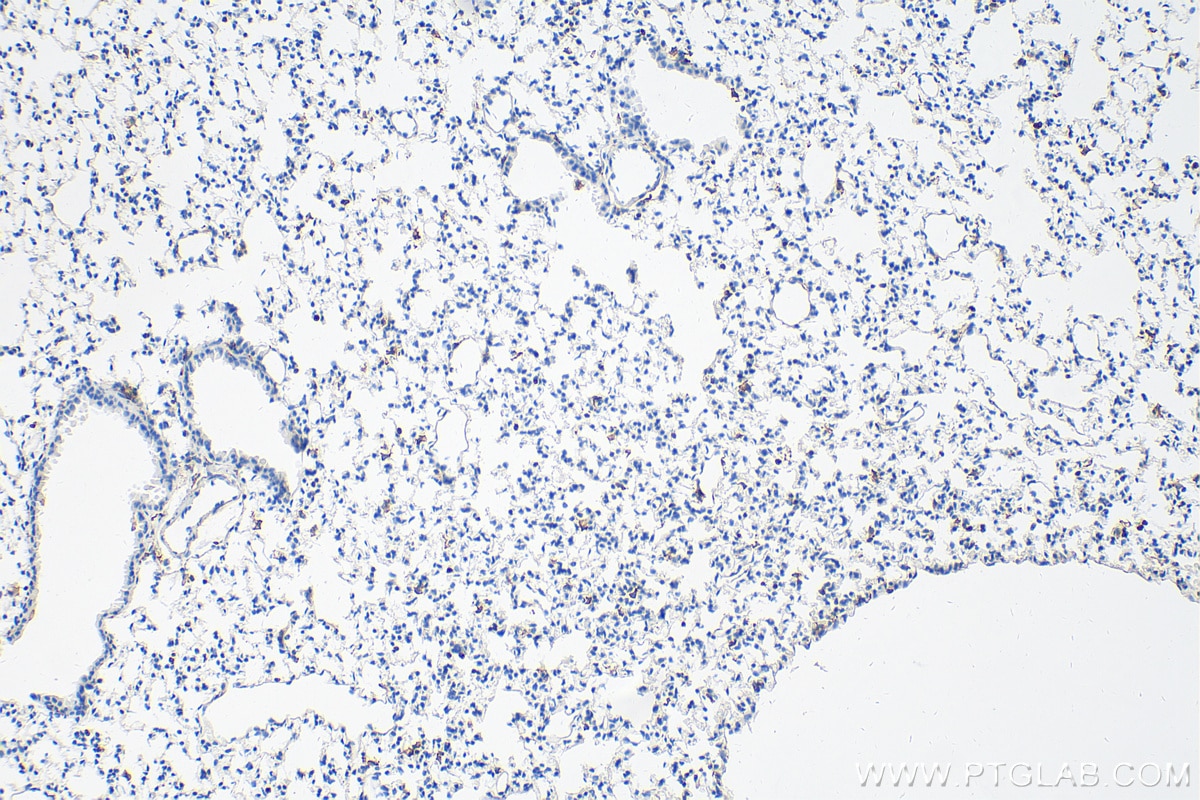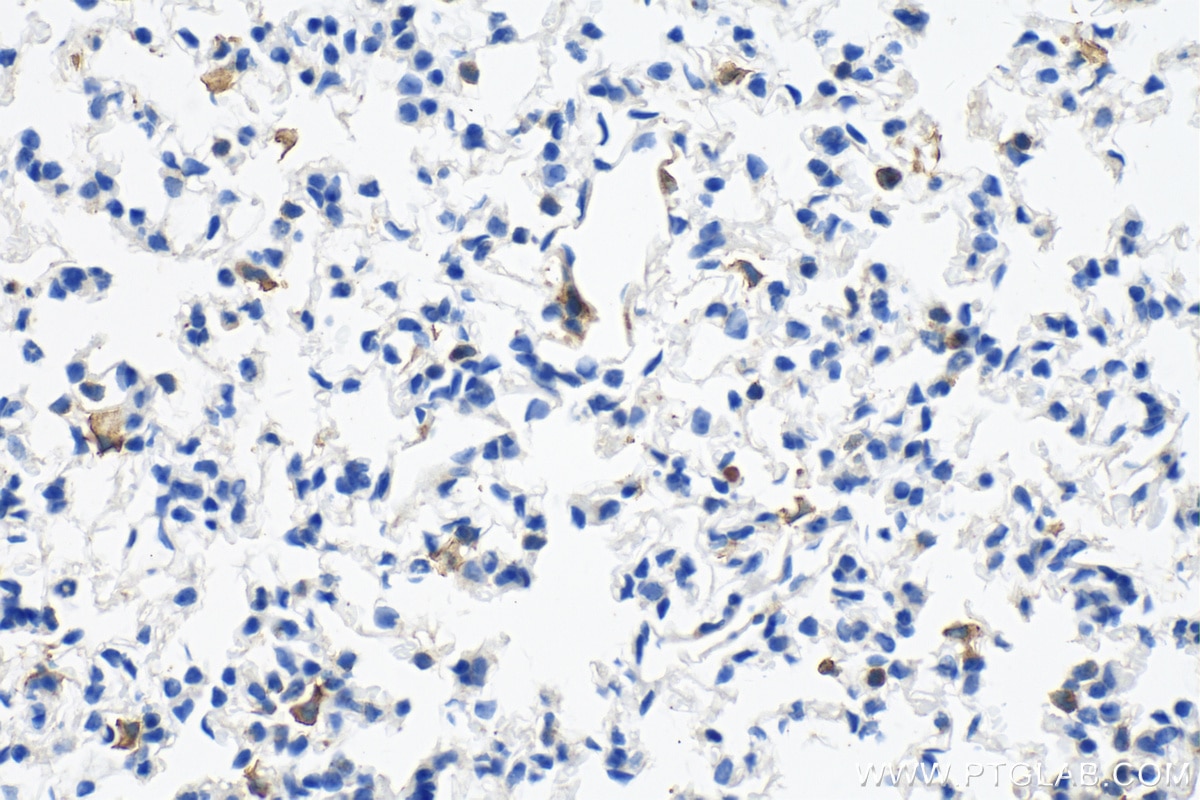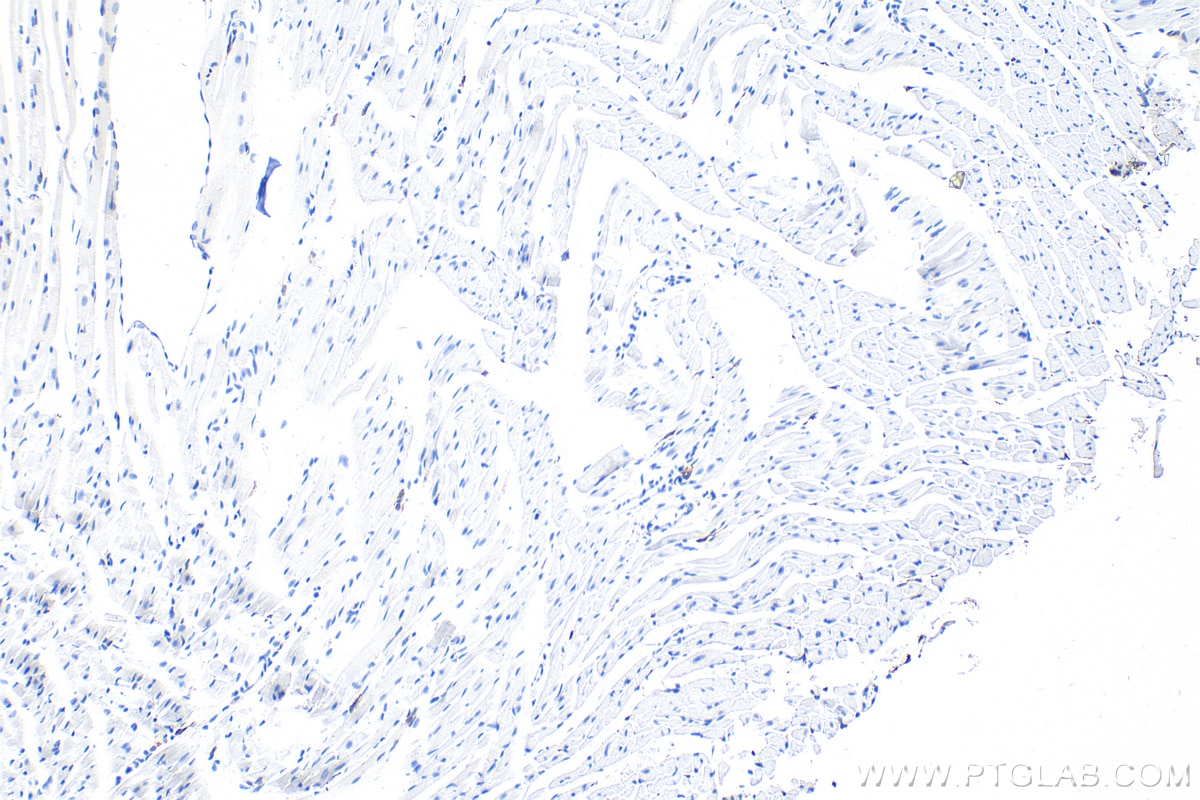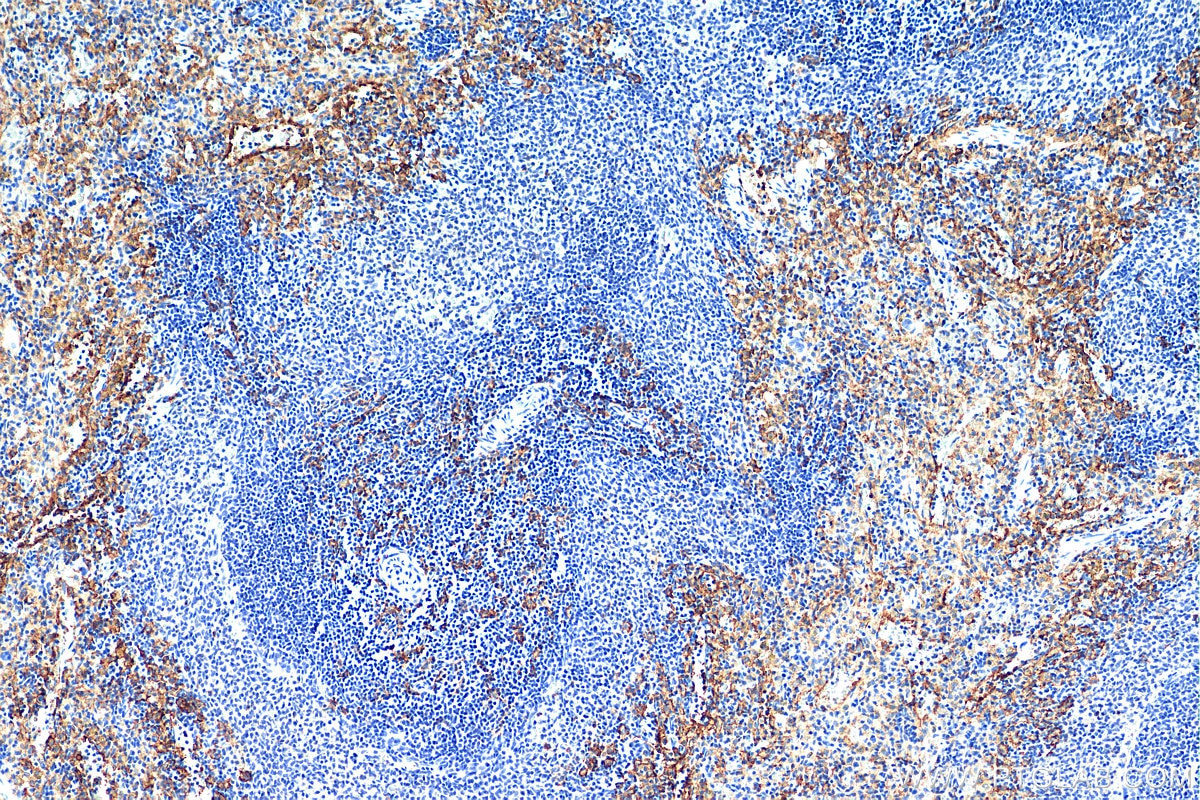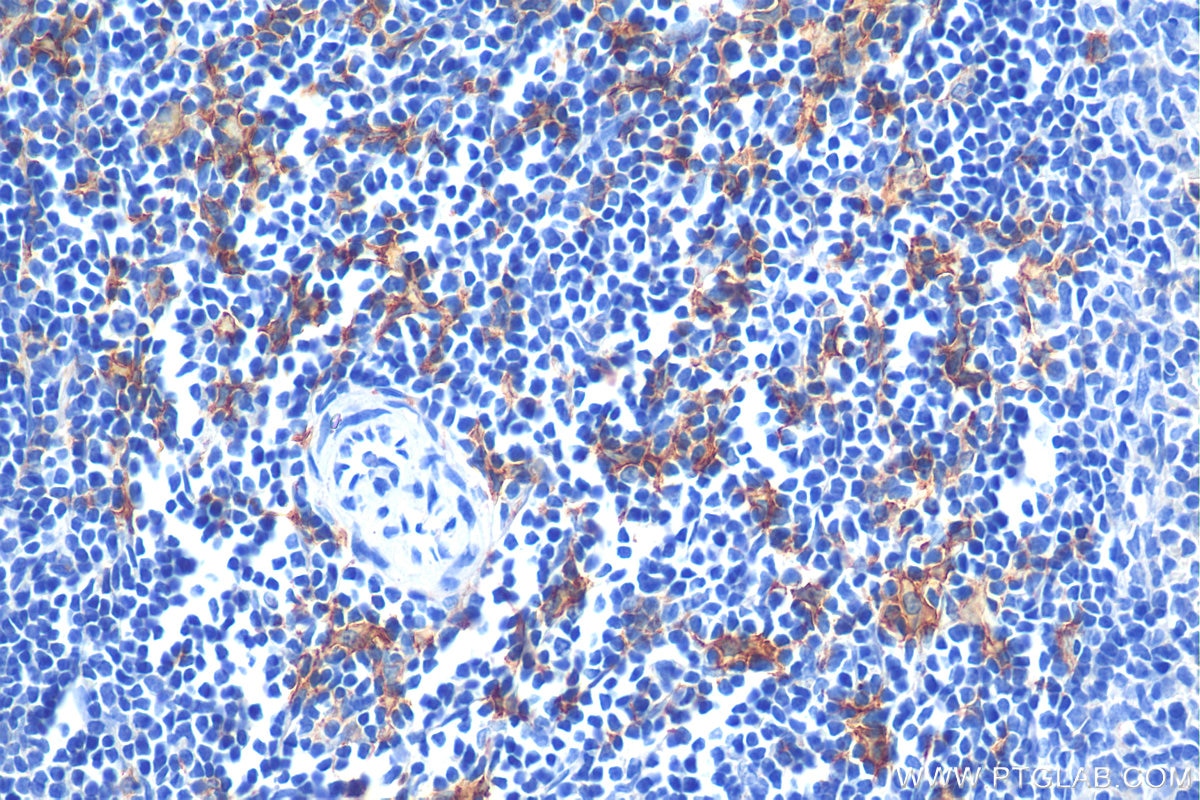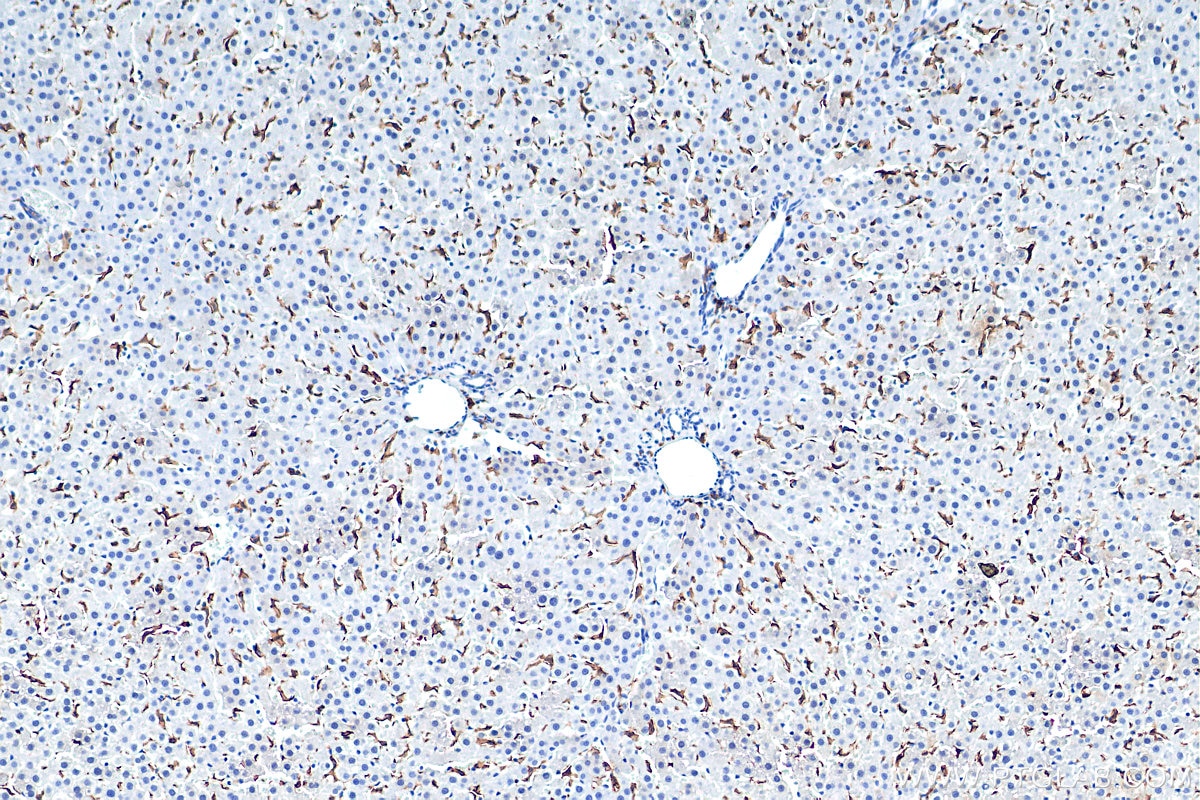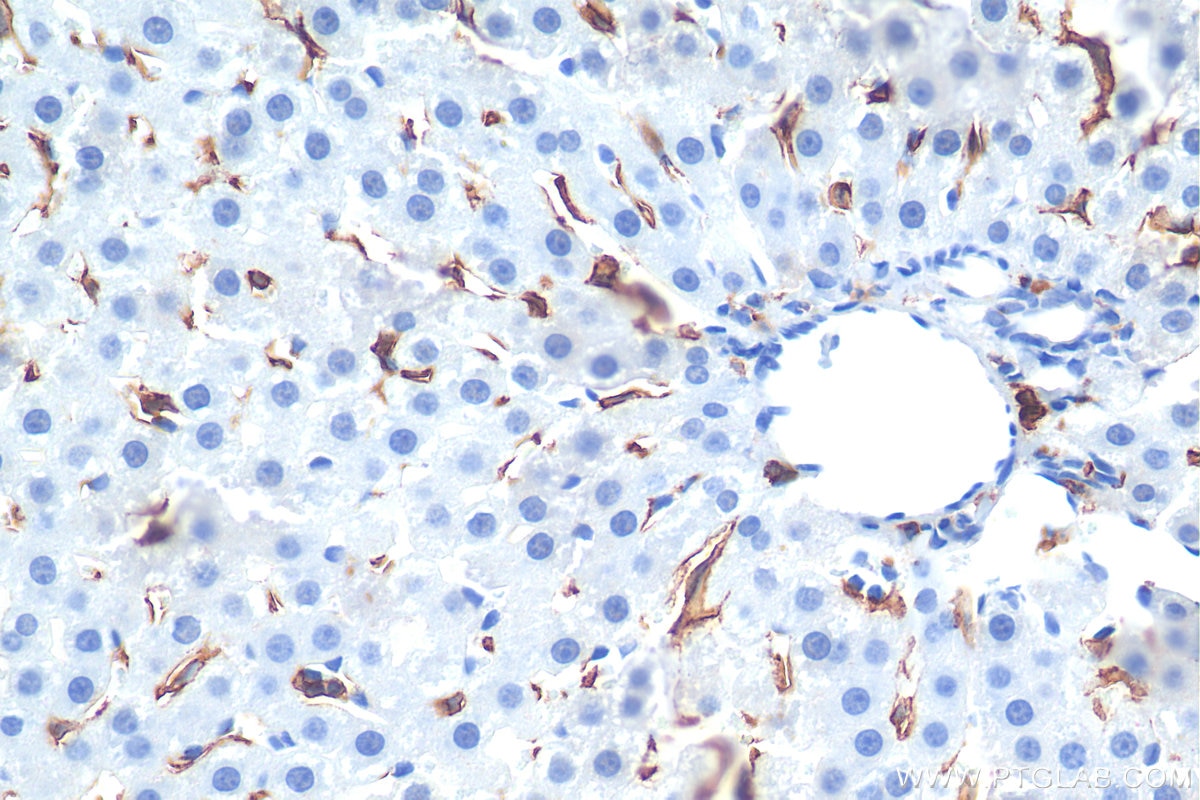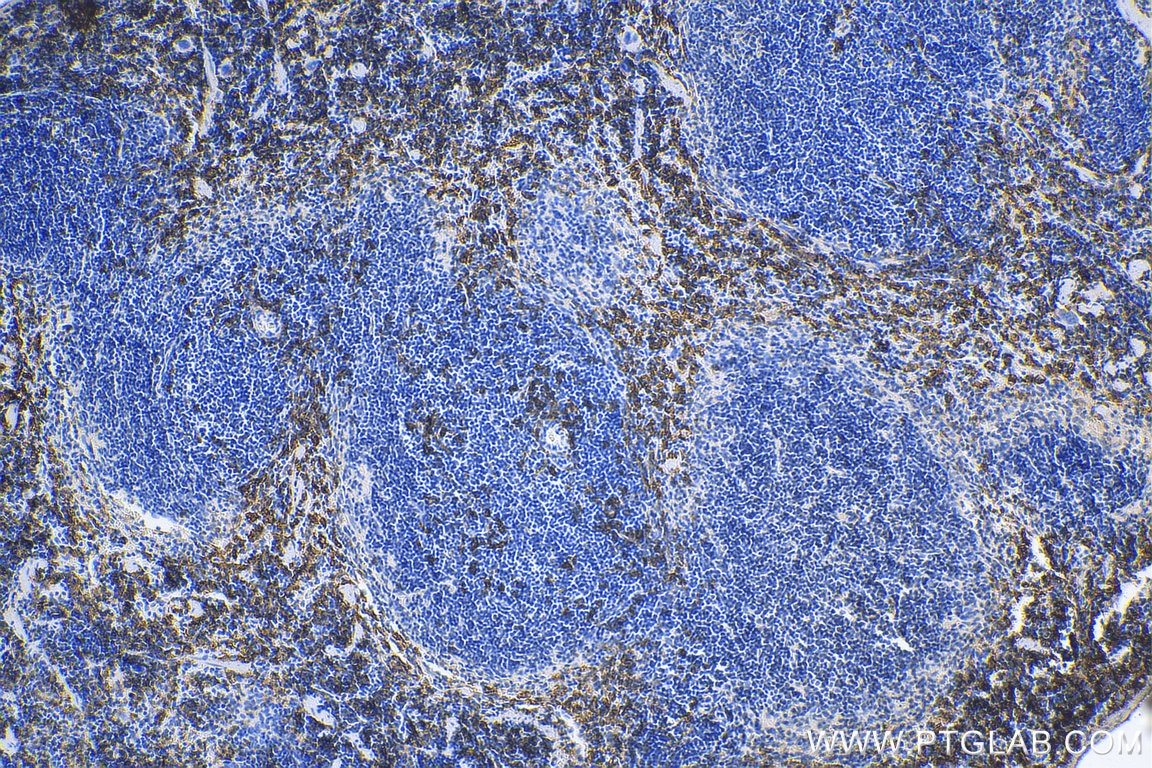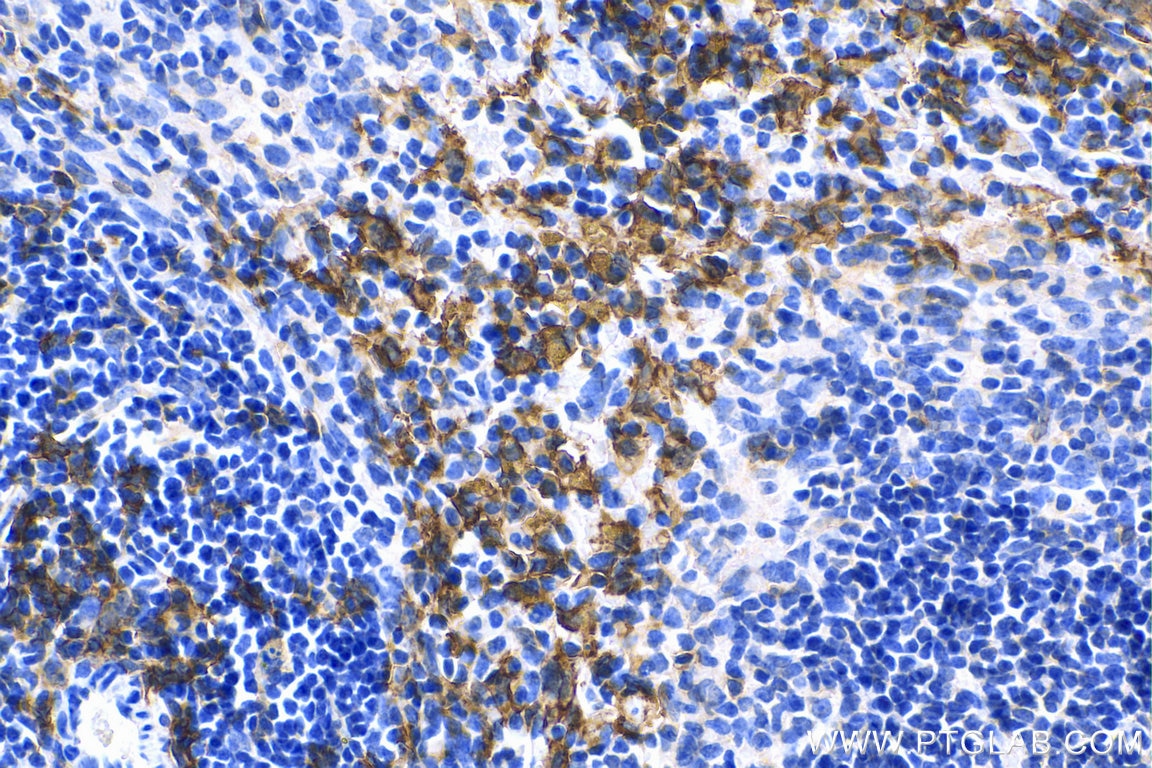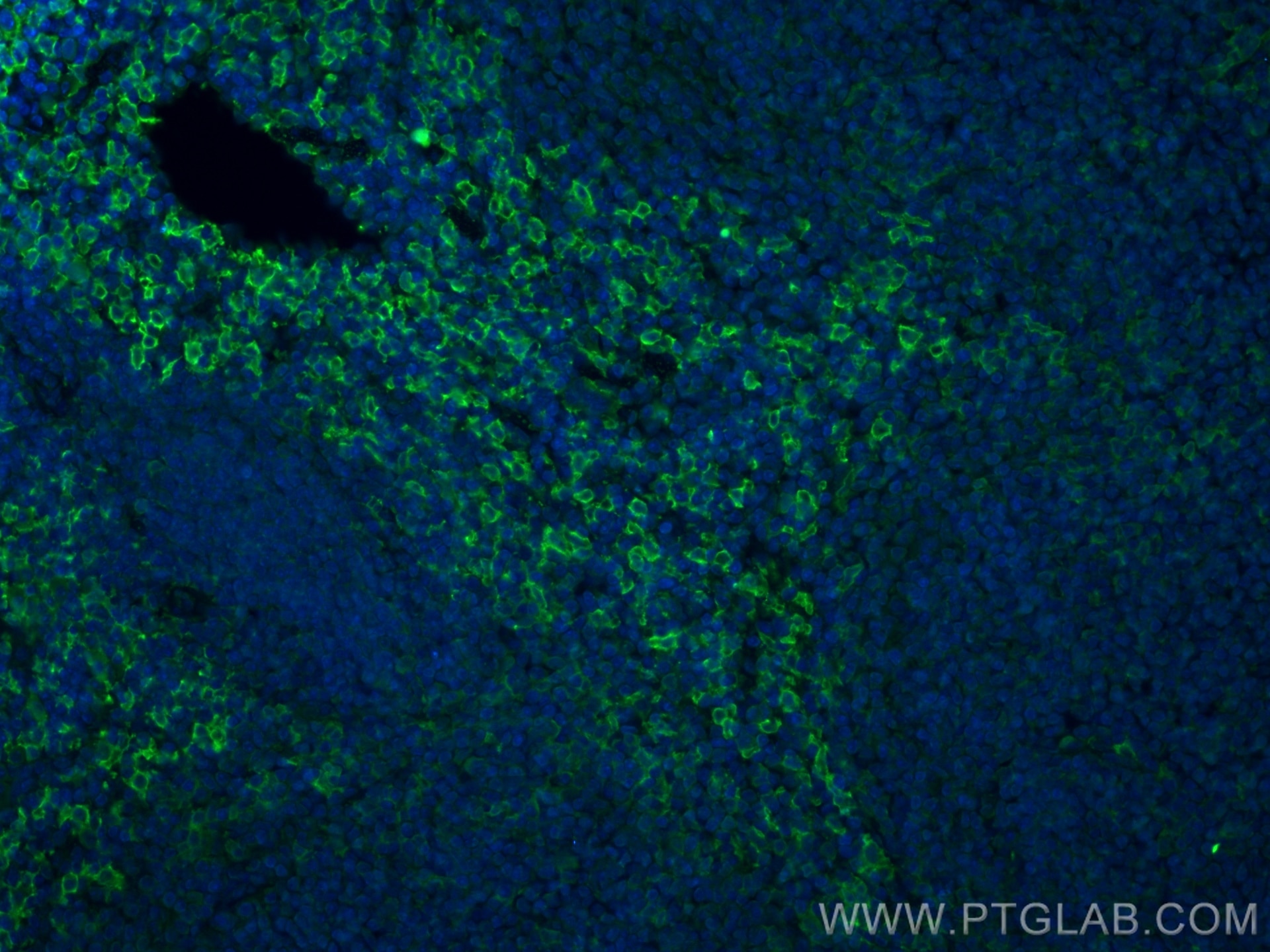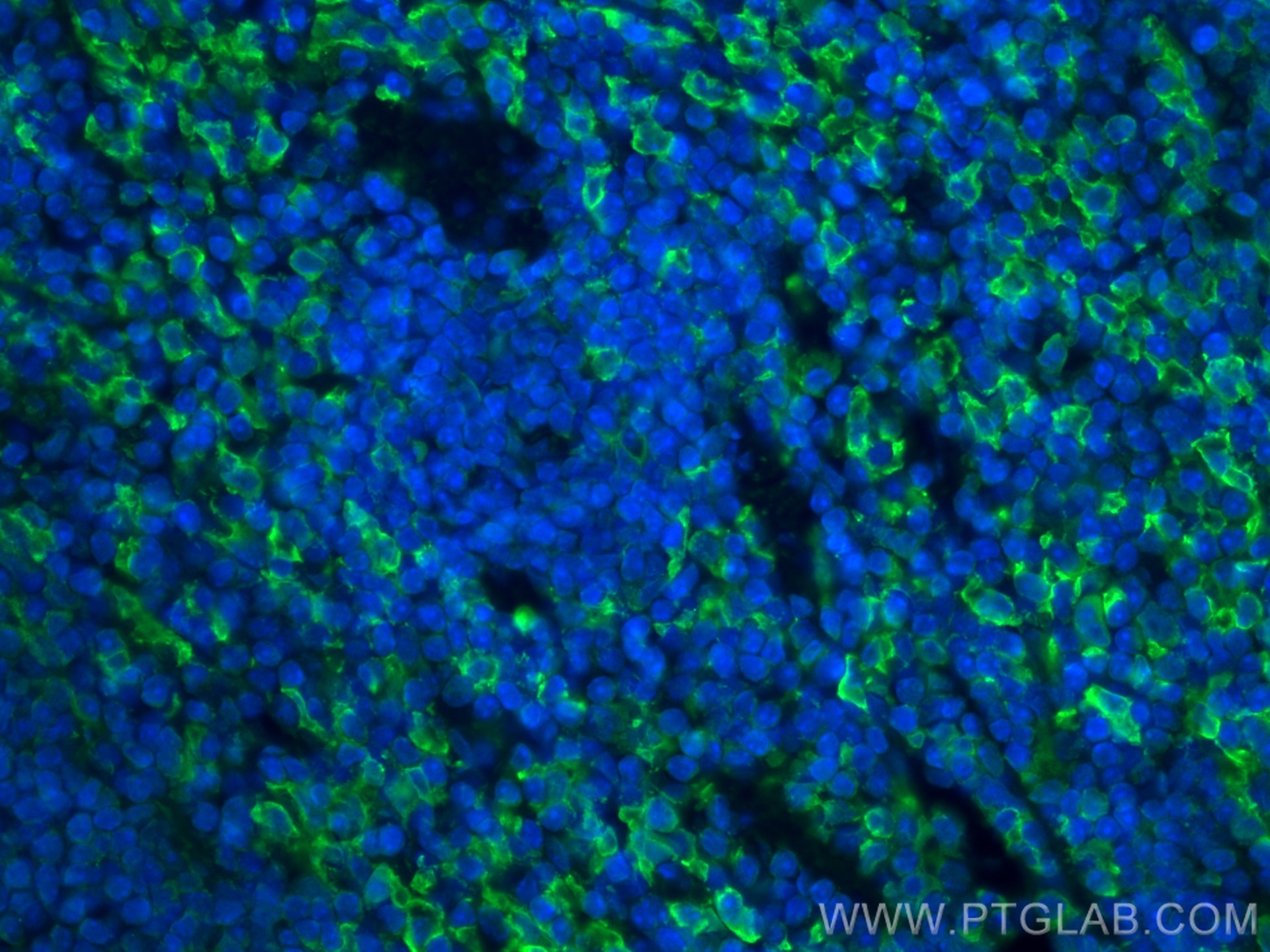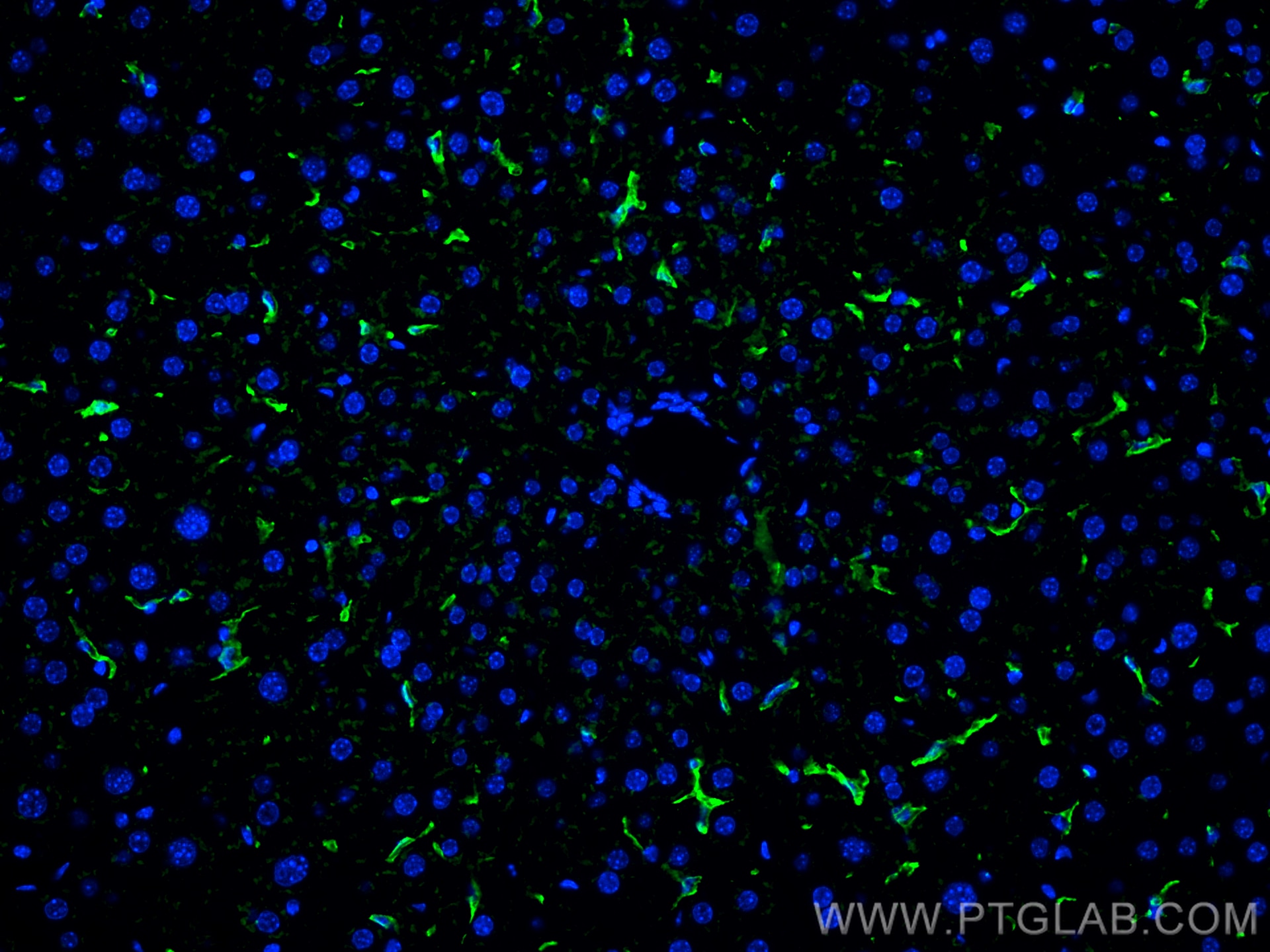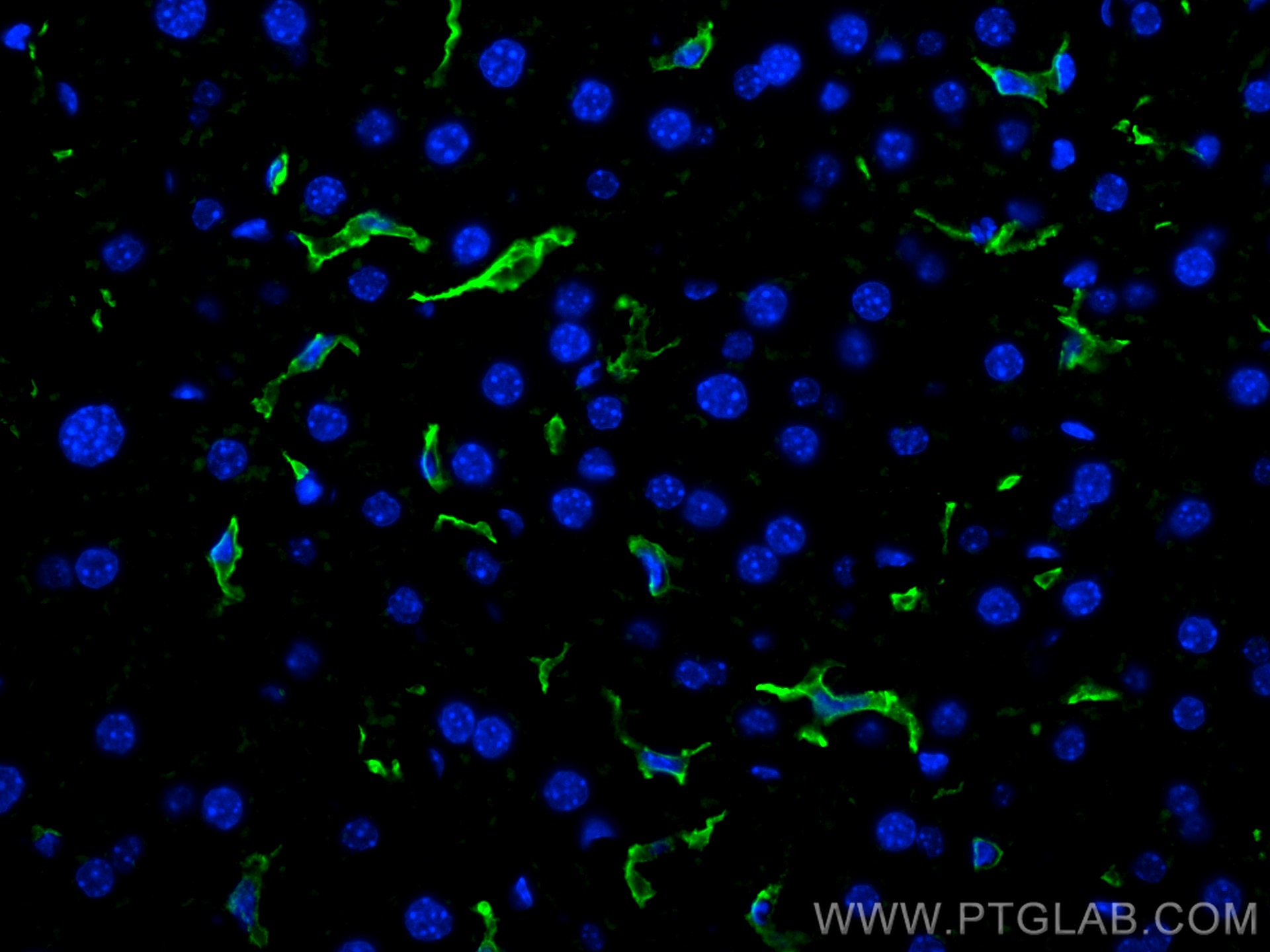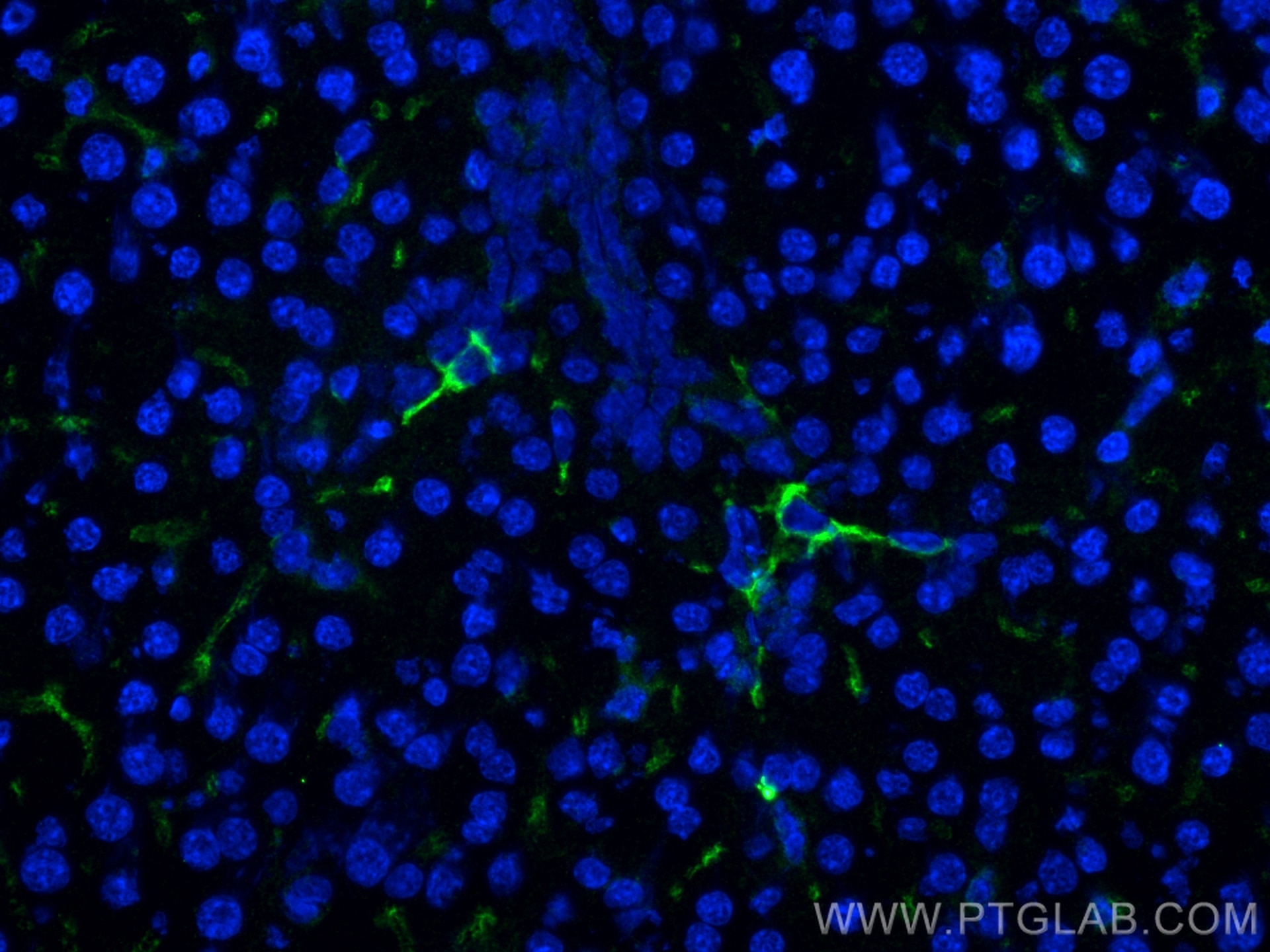F4/80 Polyklonaler Antikörper
F4/80 Polyklonal Antikörper für IHC, IF-P, ELISA
Wirt / Isotyp
Kaninchen / IgG
Getestete Reaktivität
Maus, Ratte und mehr (1)
Anwendung
WB, IHC, IF-P, ELISA
Konjugation
Unkonjugiert
Kat-Nr. : 29414-1-AP
Synonyme
Geprüfte Anwendungen
| Erfolgreiche Detektion in IHC | Mausmilzgewebe, Maushirngewebe, Mausherzgewebe, Mauslebergewebe, Mauslungengewebe, Maus-Dünndarmgewebe, Rattenlebergewebe, Rattenmilzgewebe Hinweis: Antigendemaskierung mit TE-Puffer pH 9,0 empfohlen. (*) Wahlweise kann die Antigendemaskierung auch mit Citratpuffer pH 6,0 erfolgen. |
| Erfolgreiche Detektion in IF-P | Mausmilzgewebe, Mauslebergewebe |
| Erfolgreiche Detektion in IF-Fro | Mauslebergewebe |
Empfohlene Verdünnung
| Anwendung | Verdünnung |
|---|---|
| Immunhistochemie (IHC) | IHC : 1:8000-1:20000 |
| Immunfluoreszenz (IF)-P | IF-P : 1:50-1:500 |
| Immunfluoreszenz (IF)-FRO | IF-FRO : 1:50-1:500 |
| It is recommended that this reagent should be titrated in each testing system to obtain optimal results. | |
| Sample-dependent, check data in validation data gallery | |
Veröffentlichte Anwendungen
| WB | See 8 publications below |
| IHC | See 44 publications below |
| IF | See 58 publications below |
Produktinformation
29414-1-AP bindet in WB, IHC, IF-P, ELISA F4/80 und zeigt Reaktivität mit Maus, Ratten
| Getestete Reaktivität | Maus, Ratte |
| In Publikationen genannte Reaktivität | human, Maus, Ratte |
| Wirt / Isotyp | Kaninchen / IgG |
| Klonalität | Polyklonal |
| Typ | Antikörper |
| Immunogen | F4/80 fusion protein Ag30149 |
| Vollständiger Name | EGF-like module containing, mucin-like, hormone receptor-like sequence 1 |
| Berechnetes Molekulargewicht | 102 kDa |
| GenBank-Zugangsnummer | NM_010130 |
| Gene symbol | F4/80 |
| Gene ID (NCBI) | 13733 |
| Konjugation | Unkonjugiert |
| Form | Liquid |
| Reinigungsmethode | Antigen-Affinitätsreinigung |
| Lagerungspuffer | PBS with 0.02% sodium azide and 50% glycerol |
| Lagerungsbedingungen | Bei -20°C lagern. Nach dem Versand ein Jahr lang stabil Aliquotieren ist bei -20oC Lagerung nicht notwendig. 20ul Größen enthalten 0,1% BSA. |
Hintergrundinformationen
Mouse F4/80, also named as EMR1 and Gpf480, is a 160kd cell surface glycoprotein which is a member of the EGF TM7 family. The F4/80 molecule is solely expressed on the surface of macrophages and serves as a marker for mature macrophage tissues, including Kupffer cells in liver, splenic red pulp macrophages, brain microglia, gut lamina propria and Langerhans cells in the skin. The function of F4/80 is unclear, but it is speculated to be involved in macrophage adhesion events, cell migration or as a G protein-coupled signaling component of macrophages.
Protokolle
| PRODUKTSPEZIFISCHE PROTOKOLLE | |
|---|---|
| IHC protocol for F4/80 antibody 29414-1-AP | Protokoll herunterladenl |
| IF protocol for F4/80 antibody 29414-1-AP | Protokoll herunterladen |
| STANDARD-PROTOKOLLE | |
|---|---|
| Klicken Sie hier, um unsere Standardprotokolle anzuzeigen |
Publikationen
| Species | Application | Title |
|---|---|---|
Cancer Commun (Lond) Glutamine metabolic microenvironment drives M2 macrophage polarization to mediate trastuzumab resistance in HER2-positive gastric cancer | ||
J Exp Clin Cancer Res FAM171B stabilizes vimentin and enhances CCL2-mediated TAM infiltration to promote bladder cancer progression | ||
Mater Today Bio Mussel-inspired collagen-hyaluronic acid composite scaffold with excellent antioxidant properties and sustained release of a growth factor for enhancing diabetic wound healing. | ||
ACS Appl Mater Interfaces Catalysis-Mediated Male Contraception through Black Phosphorus Nanosheets | ||
Mater Today Bio Intracellular hydrogelation of macrophage conjugated probiotics for hitchhiking delivery and combined treatment of colitis | ||
EMBO Rep Eicosapentaenoic acid induces macrophage Mox polarization to prevent diabetic cardiomyopathy |
